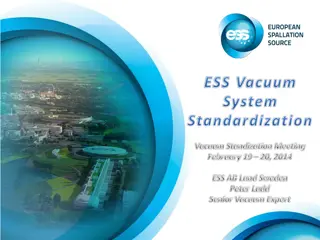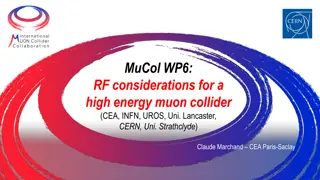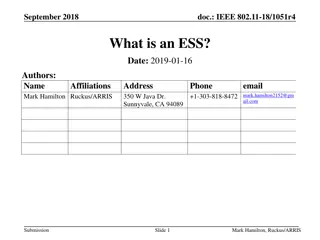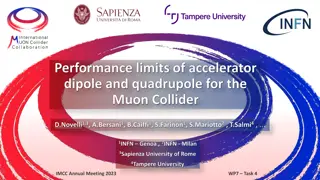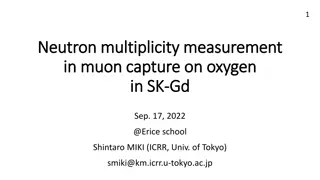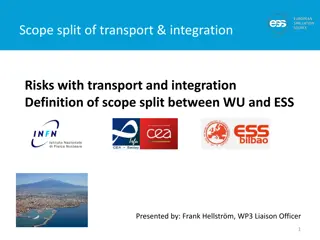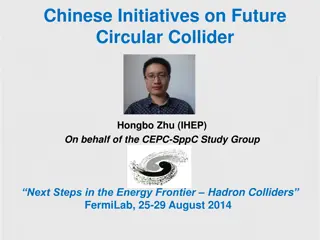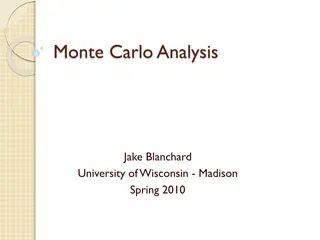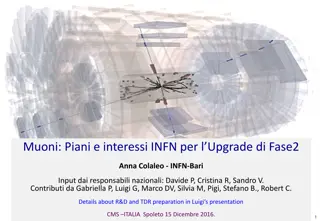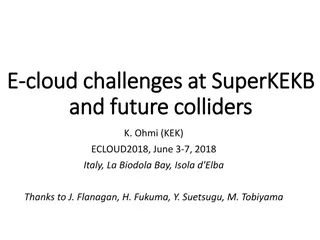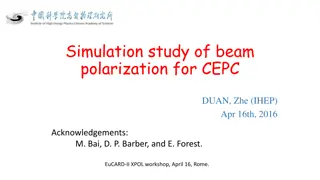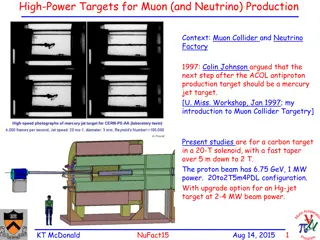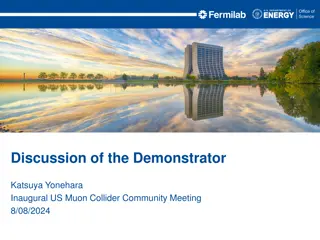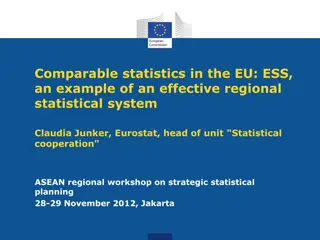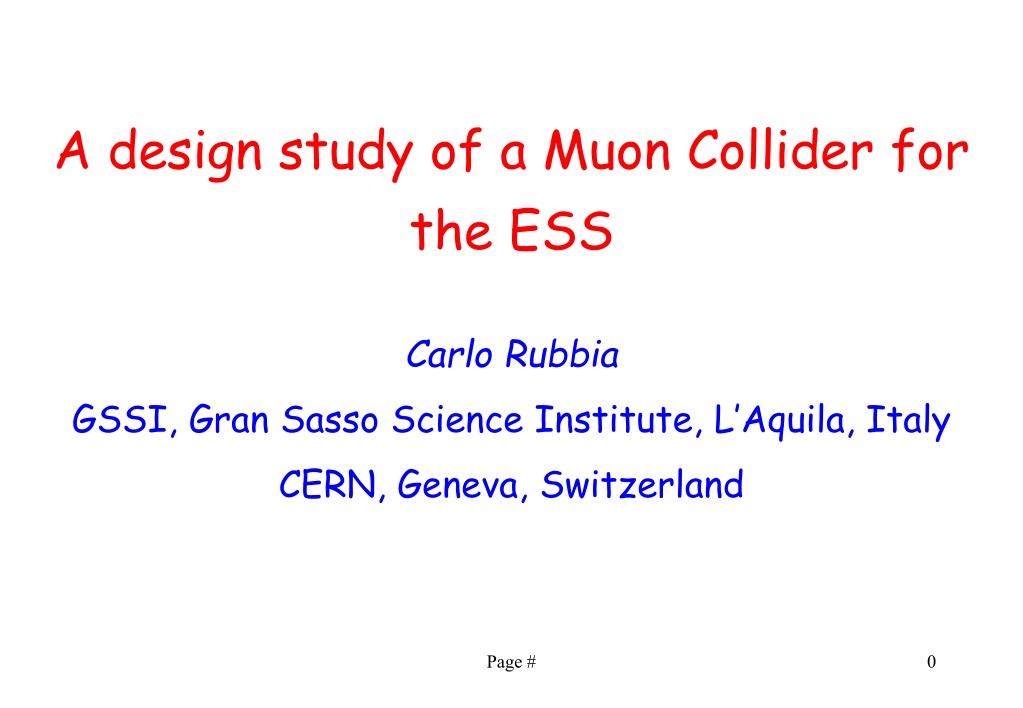
Muon Collider Design Study for ESS at GSSI and CERN
"Explore the design study of a Muon Collider for the ESS carried out by Carlo Rubbia at GSSI, Italy, and CERN, Switzerland. The study delves into muon beams, proton beams, muon cooling, and the main steps of the process. Discover the potential advancements in the Higgs sector and the innovative technologies being considered for particle acceleration and collision experiments."
Download Presentation

Please find below an Image/Link to download the presentation.
The content on the website is provided AS IS for your information and personal use only. It may not be sold, licensed, or shared on other websites without obtaining consent from the author. If you encounter any issues during the download, it is possible that the publisher has removed the file from their server.
You are allowed to download the files provided on this website for personal or commercial use, subject to the condition that they are used lawfully. All files are the property of their respective owners.
The content on the website is provided AS IS for your information and personal use only. It may not be sold, licensed, or shared on other websites without obtaining consent from the author.
E N D
Presentation Transcript
A design study of a Muon Collider for the ESS Carlo Rubbia GSSI, Gran Sasso Science Institute, L Aquila, Italy CERN, Geneva, Switzerland Page # 0
Muon beams for the Higgs sector In analogy with the Z and W, where the initial discovery with hadron beams was completed with measurements with lepton pairs (LEP), the Higgs sector may require further steps beyond the approved HL-LHC . Differences are however relevant. The r.m.s. width of the H0 resonance is 4.2 MeV compared with the 2.5 GeV the Z0 . H0 is a scalar (spin zero) rather than a vector particle. Accumulating an adequate number of protons at a few GeV, the production of muons from - is based on three configurations (1) + - production at the H0 resonance; (2) production of single and double Ho up to > 0.5 TeV and (3) highest energy + - collisions at s 14 TeV in the existing LHC tunnel, with a physics reach roughly equivalent to the one of the novel 100 TeV pp collider in the new 100 km tunnel ESS may carry out phases (1) and (2) as an extension of the approved neutron programs. The LHC tunnel is necessary for (3). Page # Slide# : 1
The proton beams According to the present initial design, the ESS-LINAC will make possible acceleration at 14 Hz of 2.86 ms long and 62.5 mA proton pulses to 2.0 GVolt kinetic energy, corresponding to 1.1 x 1015 protons/pulse and to an average beam power of nearly 5.0 MWatt. The duty cycle of the accelerator complex is 4%. A main feature is the increase to 8% of the proton duty cycle with a pair of proton storage rings in a same tunnel: a first ring called the accumulator to collect the LINAC pulse and a second ring called the compressor to further steer the beam according to specific requirements of the target. The multi-turn injection uses negative [p+2e-] ions two electrons and a proton accelerated by the LINAC and stripped of their two electrons at the entrance of the accumulator with a thin absorbing foil or an appropriate LASER beam. The LINAC extraction is further subdivided to 4 x 14 = 56 Hz, with four 1.25 MW batches, each with 2.5 x 1014 protons every 17.8 ms and with about 1 ns long r.m.s bunch. Page # Slide# : 2
Muon cooling The muon does not have strong interactions and it can pass through matter without significant hadronic or electromagnetic showers. It is the perfect candidate for Ionization Cooling. Cooling has been already successfully used for the p-pbar programme, in which both stochastic and electron cooling have been used. P-pbar Colliders have permitted the discoveries of the W and Zo at CERN and of the Top quark at Fermilab. Ionization Cooling may occur passing a beam periodically through a thin material to cause energy losses in the medium such as ionization and excitation, reducing the beam momentum in all three dimensions. To maintain the reference momentum of the beam, momentum is restored with accelerating RF cavities, but only in the longitudinal dimension. Ionization Cooling is straightforward; however its experimental realization with incoming muons has not been fully demonstrated Page # Slide# : 3
The main steps of the process (1) After the high Z target in a 20 T in a 100 m longitudinal field tapered to 2 T, muons of both signs exhibit a strong correlation between momentum and position and they can be brought with RF cavities to a common momentum of about 250 MeV/c and 10%. Muons are then sign separated in two small rings of about 35 m circumference where vigorous 3D cooling and rotation are performed to the ultimate equilibrium emittances and two final few ns wide bunches. In order to arrive to mHo/2 a re-circulating linear accelerator (LRA).with a eight turn arrangement of 7.8 GeV/passage is chosen. A pre-accelerator brings the energy to 2.5 GeV. Page # Slide# : 4
Concluding remarks The amount of power due to 1.9 x107 per m of electron showering coming from 6 x1012decays is very large and it must be handled with an appropriate geometry of the locations of the shower stopper for instance with the help of two cone shaped tungsten shields. Further reference: arXiv:1908.05664v3 [physics.acc-ph] 19 Aug 2019 Page # Slide# : 5

